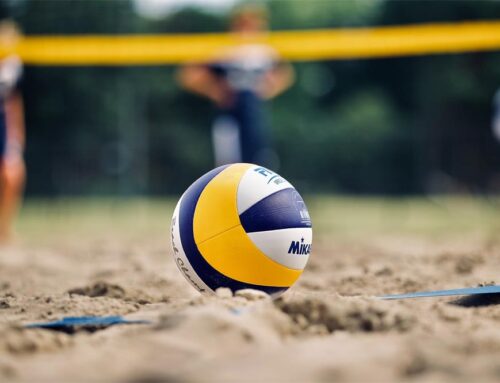Last Updated on December 25, 2023 by
A volleyball court has simple equipment, and the rules are easy to understand. You can play and train on the court or outdoors. It is suitable for people of all ages, genders, physical abilities, and training levels. In general, people divide volleyball into two types. Hard volleyball is for competitive play and is more intense. Soft volleyball is lighter, larger, more flexible, and more finger-friendly. It’s ideal for recreational games and popular among sports enthusiasts.
Types of volleyball
There are generally two types of volleyball: soft volleyball and hard volleyball.
What is soft volleyball?
Soft volleyball has a softball and a lightweight body. It also has low air pressure to prevent finger injuries, making it a safer sport.
Its slower flight speed makes it less likely to hit the ground quickly, adding to the fun of the game.
Soft volleyball has relatively simple rules. Also, the court setup is simple and provides a high level of operability.
What is Hard Volleyball?
Hard volleyballs used in official competitions have soft leather or synthetic shells.
It contains a bladder made of rubber or similar material.
The ball measures 65-67 centimeters in circumference and weighs 260-280 grams.
Differences between Hard Volleyball and Soft Volleyball
The soft volleyball is made of soft rubber. It is lightweight and has a slower speed. This makes it more suitable for recreational games. Soft volleyballs can be used indoors. However, they lack the durability of hard volleyballs on outdoor surfaces. Soft volleyballs are prone to deformation.
Hard volleyball is specifically designed for competitive play. It requires high physical fitness and technical skills. With its elasticity and striking speed, it reflects the game’s intensity. It also provides more entertainment.
Technical Differences Between Soft Volleyball and Hard Volleyball
Serving
The soft volleyball has low air pressure, so it’s essential to accelerate the swing speed, maintain tension in the hitting muscles, and ensure the best serve.
Passing
The hand shape for passing in soft volleyball is slightly larger than in hard volleyball. During passing, you don’t need finger or wrist cushioning. Other technical aspects are the same as in hard volleyball.
Digging
Soft volleyball has a slower flight speed than hard volleyball. The ball may suddenly sink when flying long distances. Additionally, the ball is softer. This causes concavity and sliding when it contacts the arms. It also makes the ball’s center of gravity easily surpass the point of contact. Therefore, when digging in soft volleyball, the player must pay special attention to positioning in advance. The body’s center of gravity should be slightly forward compared to the landing point of hard volleyball. Or, the arms should be aligned directly with the incoming ball during digging. Moreover, slightly increase the hitting force for the best digging effect.
Spiking
In soft volleyball, the wrapping motion used in hard volleyball spiking is reduced. Instead, you use the entire palm to embrace the ball. It is struck in the upper-middle or upper-back part (above or behind the ball). Soft volleyball is lightweight. The ball is prone to sinking during flight. So, the spiker must pay special attention when choosing the take-off point. Additionally, the soft volleyball ball doesn’t allow spiking with the twisting motion used in hard volleyball. When employing the soft volleyball’s light lobbing technique, it is important to apply adequate force. This prevents the fingers from sinking into the ball and avoids mistakes.
Blocking
The blocking technique in soft volleyball differs from hard volleyball. In soft volleyball, the distance between the hands should be smaller. Both hands should be directly facing the incoming ball, covering it. When performing a frontal block to prevent the opponent’s spiked ball from having excessive speed and force, due to the deformation of the ball. This may squeeze through the hands and arms, potentially leading to a failed block.




Leave A Comment